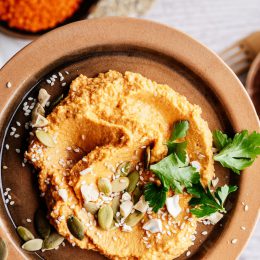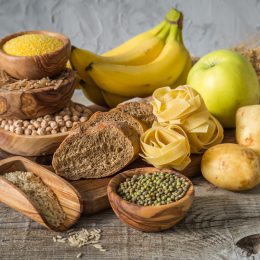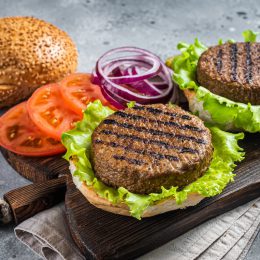The 5 Healthiest Teas
Drinking tea can have steep health benefits. Here, we boil down the best types to brew.

Did you know that tea is the most widely consumed flavored beverage in the world? That’s right — it beats out coffee. Tea is also one of the healthiest drinks you can choose to sip. It’s been linked to many health benefits, including a lower risk of cancer, heart disease, diabetes, and cognitive decline. And with zero calories or added sugar, plain tea is a smart choice for hydration (if you’re getting bored with water).
Not yet a tea drinker? Keep reading to learn more about different kinds of tea and their many health benefits.
What is tea, exactly?
Head to a local café or the tea aisle of your grocery store and you may be overwhelmed by the options. You’ll find everything from English Breakfast to Sleepy Time.
True teas are made from the leaves of the Camellia sinensis plant. Differences in flavor and color depend on how the leaves are harvested, rolled, crushed, and exposed to air before drying. Herbal teas, such as chamomile or peppermint, are technically “tisanes,” or infusions of herbs and spices. There are tons of herbal teas out there, each with different health claims depending on what they’re made from.
Healthy eating and fitness go together! SilverSneakers classes and events are happening right now at participating gyms, online through SilverSneakers LIVE, and at community centers near you. Activate your free online account to get started.
What are the health benefits of tea?
True teas, like black, green, and oolong, are rich in unique disease-fighting plant compounds. In particular, they are high in flavonoids, which are antioxidants thought to be responsible for many of the anti-aging benefits linked to drinking tea.
A 2024 study from the journal Scientific Reports looked at flavonoid intake in over 11,000 U.S. adults and their risk of death from cancer, heart disease and other causes. Those who consumed the most flavonoids, including those found in tea, were 55% less likely to die of cancer and 33% less likely to die of heart disease compared to those who consumed the least flavonoids.
When it comes to herbal teas, each has a different health claim depending on what it’s made from.
And let’s not overlook that drinking tea can help keep you hydrated. Tea is just as good as water for hydration, and it contains no calories or added sugar. Replacing sugary drinks with hot or iced tea can help you stay hydrated while maintaining a healthy weight.
Recommended reading: How to Stay Hydrated Before, During, and After a Workout
What kind of tea should I drink?
You really can’t go wrong when choosing a tea to drink. They all contain antioxidants and other beneficial plant compounds. What you choose depends on your personal preferences. Here’s a primer on five top tea choices to help you decide.
1. Black Tea
Black teas have a much darker color and stronger flavor compared to green teas. That’s because they go through an oxidation process. The tea leaves are crushed and exposed to air, which turns them brown and intensifies the tea’s flavor.
Types of black tea include:
- English Breakfast (made from a blend of black teas)
- Earl Grey (made by flavoring black tea with the oil of bergamot)
- Darjeeling and Assam (teas grown and produced in specific regions in India)
- Chai (black tea mixed with warm spices like cinnamon, cardamom, and clove)
Black tea contains many powerful antioxidants that help protect your cells from oxidative stress and inflammation. And that may help protect you from developing conditions like heart disease and cancer.
Case in point: a 2023 meta-analysis of 19 studies looked at mor than two million people and found that women who drank between one and a half to three cups of black tea per day had a 36% lower risk of developing ovarian cancer.
Just keep in mind that black tea is the most caffeinated tea. An 8-ounce cup has about 50 mg of caffeine (which is about half of what’s in a typical cup of coffee). So black tea is better served earlier in the day when it’s less likely to disrupt your sleep.
2. Green Tea
Green tea leaves keep their green color because they’re picked while they’re young, then immediately heated (often steamed) to prevent oxidation. This also gives green tea a much milder flavor than black tea.
Green tea is considered a “superfood” thanks to its sky-high antioxidant content. In particular, it’s a good source of catechins. Research shows these antioxidants have anti-tumors powers that may help prevent common cancers.
Green tea has been linked to many other potential health benefits, too, including:
- Improving brain functioning
- Lowering blood pressure
- Balancing blood sugar
- Improving bone strength
With about 30 mg of caffeine per cup, green tea is less caffeinated than black tea. It’s a great option if you’re looking for a gentler morning buzz.
3. Matcha
Matcha is like the superhero version of green tea. Made of finely ground green tea leaves, matcha is a powder that you dissolve into water (or other liquid). Since you’re consuming the whole leaf when you drink it, you get even higher amounts of the antioxidants in green tea.
Matcha has a much stronger and “grassy” flavor compared to brewed green tea, but the caffeine content is similar. Be wary of trendy matcha lattes or other matcha drinks at cafes — they’re often loaded with added sugar and might contain very little matcha.
You can make a sugar free matcha drink at home: Heat some water to just under boiling (boiling water will make the matcha taste more bitter). Place a teaspoon of matcha powder in a mug and add 2 to 3 ounces of the hot water. Whisk until frothy and then add more water to dilute the tea to tastes.
Tea isn’t the only way to use matcha powder. Try some of these creative uses:
- Add it to smoothies for an antioxidant boost
- Add to baked goods like pancakes or muffins for green coloring and a subtle grassy flavor
- Sprinkle it on popcorn
- Mix it into overnight oats, chia pudding, or yogurt and fruit
- Mix with juice or milk and make matcha popsicles
Recommended reading: Which Healthy Drink Is Best for You?
4. Oolong
Oolong tea falls somewhere between green and black tea. Its leaves are “semi-oxidized,” making it a great option if black tea is too strong for you, but you want something a little more robust than green tea.
Oolong contains many of the same antioxidants as black and green teas. There’s less research on the health benefits of oolong tea specifically, but one study found a promising link between oolong tea and higher bone mineral density in postmenopausal women.
5. Rooibos
Looking for the antioxidant benefits of tea without the caffeine? Try rooibos! Technically an herbal tea, rooibos is naturally caffeine free. The leaves come from a shrub native to South Africa where rooibos tea been sipped for centuries for its medicinal properties. Rooibos tea typically has a nutty, malty, earthy, and sweet flavor.
While there is less research on rooibos tea, we do know that the herbal brew boasts many antioxidants including flavonoids. To get the most antioxidants from rooibos, you can steep it in a boiling water for several minutes.
Subscribe to our newsletter
It's quick and easy. You could be one of the 13 million people who are eligible.
Already a member? Click to discover our 15,000+ participating locations.
Follow Us
This is different from black and green teas which should be steeped in water just below boiling, and for no more than a few minutes. Black and green tea contain tannins that can make the tea bitter if steeped for too long. Rooibos is low in tannins and can be steeped almost indefinitely without ever getting bitter.
Tips for a Healthier Cup of Tea
Enjoy more than one cup. There is no set amount of tea that you need to consume to convey health benefits, but some experts recommend having at least two to three cups per day of tea to try to maximize the impact.
Don’t rush to sip. How long you steep your tea can impact its antioxidant properties. Steeping tea for about three minutes will release the maximum amount of beneficial plant compounds into your mug.
Give loose leaf a chance. Loose leaf may yield a higher antioxidant load than bagged tea and also have better flavor. It’s recommended to use about 1 teaspoon of loose leaf tea for each mug of brewed tea.
Here’s another win for loose leaf: A 2019 study in Environmental Science & Technology revealed that plastic tea bags may shed micro- and nano-sized plastic bits, which are potentially harmful to the environment and your body. But how much tea brewed from these tea bags you have to consume to have a negative health impact is not known.
Try it cold. Research shows that steeping green tea in cold water for at least two hours can result in the most antioxidant-rich brew. So consider steeping a batch of green tea in a glass container or jug in the fridge for a few hours, then pour some into a mug and heat in the microwave to warm it up. Or enjoy it as an iced tea during the warmer months.
Hold the sugar. Some people add sugar to their tea, especially black, to counteract the natural astringency of tea. But consuming too much added sugar can lead to health ramifications so try to train your tastebuds to enjoy the stronger flavor of straight-up tea. If you still feel like you need something sweet in your cup, try sweetening your tea with a teaspoon of honey.
And the milk. Ideally, you want to enjoy brewed tea minus the milk since there is research showing that milk proteins like casein as well as milk fat globules may bind up tea antioxidants and make them less useful to us.
Beware of a too-hot brew. Research suggests that drinking too much scalding-hot tea can boost your risk of esophageal cancer, potentially by increasing inflammation. To play it safe, it’s advisable to consume hot beverages at no more than 140 degrees Fahrenheit.
Add a squeeze of lemon. The greasy film that sometimes forms on the surface of a mug of black tea—colloquially known as tea scum— is the result of a reaction between the natural plant compounds in tea called polyphenols and calcium carbonate in hard water. If this is displeasing to you a squeeze of lemon juice can reduce or eliminate
See our sources:
Popularity of tea: U.S. Census Bureau
Flavonoids and mortality: Scientific Reports
Tea consumption and ovarian cancer: Nutrients
Oolong tea and bone mineral density: Archives of Osteoporosis
Activate Your FREE SilverSneakers Online Account
Get hundreds of free SilverSneakers On-Demand videos and stay in touch with us by creating your free online account. You don’t have to be a SilverSneakers member to get on-demand workout videos, health and fitness tips from SilverSneakers, and more.
SilverSneakers members can go to thousands of nationwide gyms and fitness locations, plus take SilverSneakers LIVE online classes led by specially trained instructors and designed for all fitness levels and abilities – at no additional cost. If you have a Medicare Advantage plan, it may include SilverSneakers. Check your eligibility here.
Already a member? Get your SilverSneakers member ID, search for locations near you, and all the health and wellness resources you need by logging in to your online member account here.





